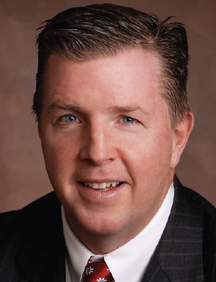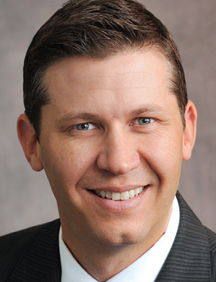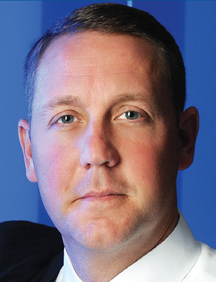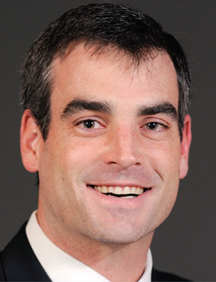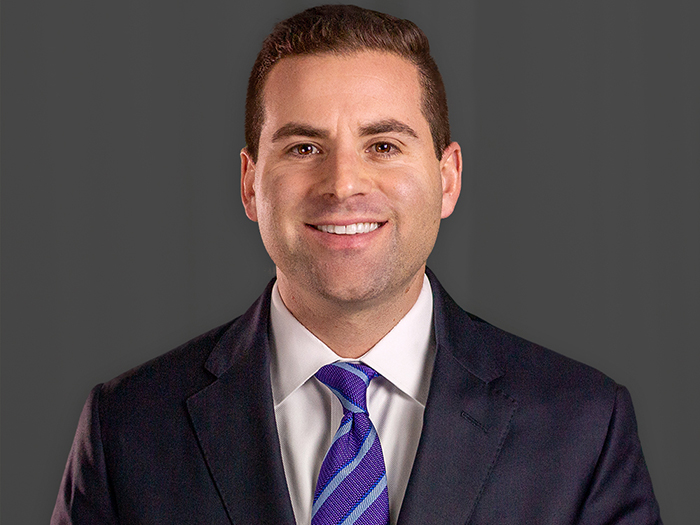2015 Power Broker
Energy (Upstream)
Broker’s Efforts Help Drive Expansion
At the same time a client was doubling the size of its holdings in the U.S. and in the Middle East, Aon’s Clayton Corbett pulled off quite a coup.
“[He] was able to negotiate enhanced coverage for our expanded global business,” said the client, “largely with our existing insurance providers, and increased some of our policy limits to reflect the market demand, yet broadly maintained the overall dollar premium cost we paid last year.”
The client completed its annual renewal late in 2014, a year that included acquisitions in Europe and Southeast Asia.
“Clayton has gone the extra mile,” the insurance manager said, “achieving fantastic results in securing enhanced cover for our company during our renewal this year at substantially improved rates, while retaining continuity across our providers.
“Clayton is always very responsive to our requirements, knowledgeable about the market in which we operate and a great source of advice on what level of cover is appropriate for our business as it develops.
During our recent renewal program he was very supportive in guiding the team regarding the information requirements and managed the process effectively.” He said that Corbett was also able obtain some specific coverages required by the bank, at no additional cost to the company.
Said another client, “Clayton does not avoid discussing difficult topics with me or our executive management which is greatly appreciated as he is also able to anticipate our questions prior to being asked. He is integrated into our day-to-day processes and procedures.”
Guidance That’s Worth a Million
More than a few Power Brokers have helped new risk manager clients through their first renewals or claims. George Dougherty won his laurels for 2014 in part by supporting a risk manager who was not just new in his job, but the first ever to hold the office for his company.
“We never had a risk manager, and we never really had a good marketing plan,” said the client.
“I came into the newly created position and was asked to reduce costs. This was at a time of rising costs.”
That has been because energy-industry service providers and subcontractors have been under their own coverage exclusions, thus pushing exposures back to their customers.
“George took us to market, an area in which we had never done a good job. Once the full effects of his work were seen, he saved us about a million dollars. We had to take some higher deductibles, but he was able to explain that to senior management as a prudent approach.” The company was able to spend some of the savings on safety improvements, which are expected to pay further dividends at next renewal.
Risk transfer between companies also figured into Dougherty’s work for another client. The client carried exclusions for environmental liabilities, but because of the nature of its business, could be exposed to environmental claims or even litigation.
Dougherty coordinated an effort among carriers that was part integration and part gap analysis that aligns all the policies, clarifies abutting coverage and specifies exclusions.
Helping Small Players Gain Leverage
“We are an oil and gas company at a volatile time in the commodity cycle,” one client said.
“Adam has shown superior skill at handling a smaller size company that acts often like a larger company. I wouldn’t call us flippers of oil and gas properties, but we are certainly active and this year was an unusually active year on both the buy and sell fronts.”
It’s no small challenge buying assets with known environmental issues. Hall helped develop a program that covered the assets for claims on a go-forward basis and included assets with pre-existing conditions, the client said.
The risk manager noted, “with our carrier changing the way they are handling pollution — which is the major issue in our sector — [Hall] not only navigated us through the pros and cons of switching pollution carriers and style of coverage, but he also made it personal to a company our size that is family backed.”
The risk manager added, “He did this with the knowledge that we had done a full marketing of our liability coverages just two years ago and some carriers would be reluctant to quote us again.
“My favorite thing about Adam,” he said, “is the way that he uses his network, freely, to help his clients get together to mutually beneficial outcomes. In a year where we sold two of our larger properties and turned around and bought a few different properties, Adam has made sure we have had zero bumps.”
Unifying Approach the Key to Success
In many ways, the oilfield is the ultimate nightmare for risk management: heavy equipment operating 24/7 at height and high speeds, often with dangerous substances and usually far from emergency services.
Risk management is a challenge to say the least, and the next stage — disaster recovery — even more so.
One client charged Hollmann with integrating its disaster recovery program from disparate parts to an integrated whole.
“We called it the continuity project, because it covered our company itself as well as our field operations,” said the risk manager, “from a storm damaging our headquarters to an incident in the field affecting our equipment or crews. We had separate programs, but really needed to put all the plans and resources and coverage together. We were with another broker, but heard that Lee was an expert in this area. He really delivered for us.”
Hollmann was able to accomplish that despite rapid growth by firm that meant a large number of new and variable unknowns in the equation. There had also been losses, some with open claims. Markets were reticent, to say the least, but responded favorably to the holistic approach Hollmann took.
The client said that his previous efforts to address coverage, claim and cost issues individually had involved great exertion, but little progress. With relish, he added that once Hollmann’s strategic integration was underway, individual details fell into place. For example, $1 million of inaccurate reserve limits were discovered and corrected.
The Expertise Big Players Rely On
One of the defining characteristics of the upstream oil and gas sector is the size of the capital requirements for development.
New drilling and production techniques consume huge amounts of initial capital. One recent project had a total value of a billion dollars, and included a new physical plant, to be staffed by hundreds of new hires.
It could have been a bumpy road — the client, a start-up firm, was new to Hudler and to Alliant. But it only took a dozen meetings for Hudler to put all the ducks in a row and secure the placement.
Other clients are equally well versed in the way Hudler handles tough challenges. “We use Brian for all of our commercial insurance and well control policies,” said one risk manager.
“Brian helped us on four acquisitions of producing properties … as well as the disposition of two different producing properties. All of those individual transactions in the same year required revisions and updates to our insurance policies. With this level of activity for an exploration and production operator with a very lean staff, we relied heavily on Brian and Alliant for their expertise on insurance.”
Many brokers earn praise for winning new business, but for Power Brokers, the courtship never ends.
“We changed over to him a few years ago after not receiving the best service from our prior provider,” said one client. “I can’t say enough good things about him. We feel like he and his firm have done a great job of marketing our insurance program when necessary.”
A Reputation That Commands Respect
Brokers serving the technology category talk about how their sector is highly complex and fast moving.
But theirs isn’t the only one. Oil and gas production might seem prosaic, but the latest drilling and production techniques are nothing short of rocket science, two miles down in solid rock.
Above ground, the price of oil changes by the second, while the financial structure of operating companies and their investors evolve constantly.
“I am a former broker myself, and I keep my fingers on the industry,” said one of David Owen’s clients.
“Word was out that he was good, so we gave him a shot and were very pleased with the results. David thought he would be able to get carriers to compete head to head, and they did.
“David increased our coverage and reduced our premium by a significant amount by taking our program from a strictly domestic placement out to offshore markets,” the client said.
It’s no surprise that Owen’s reputation preceded him. Consider what he managed for another client, a privately held operator, backed by large institutional investors.
The client acquired actively producing assets from a large multinational, publicly traded, major energy company. Regulatory jurisdictions for both operational, insurance and financial rules ran the gamut. Owen arranged for multiple risk-transfer mechanisms, including contractual analysis, layered programs through Lloyd’s, and bespoke surety solutions.


